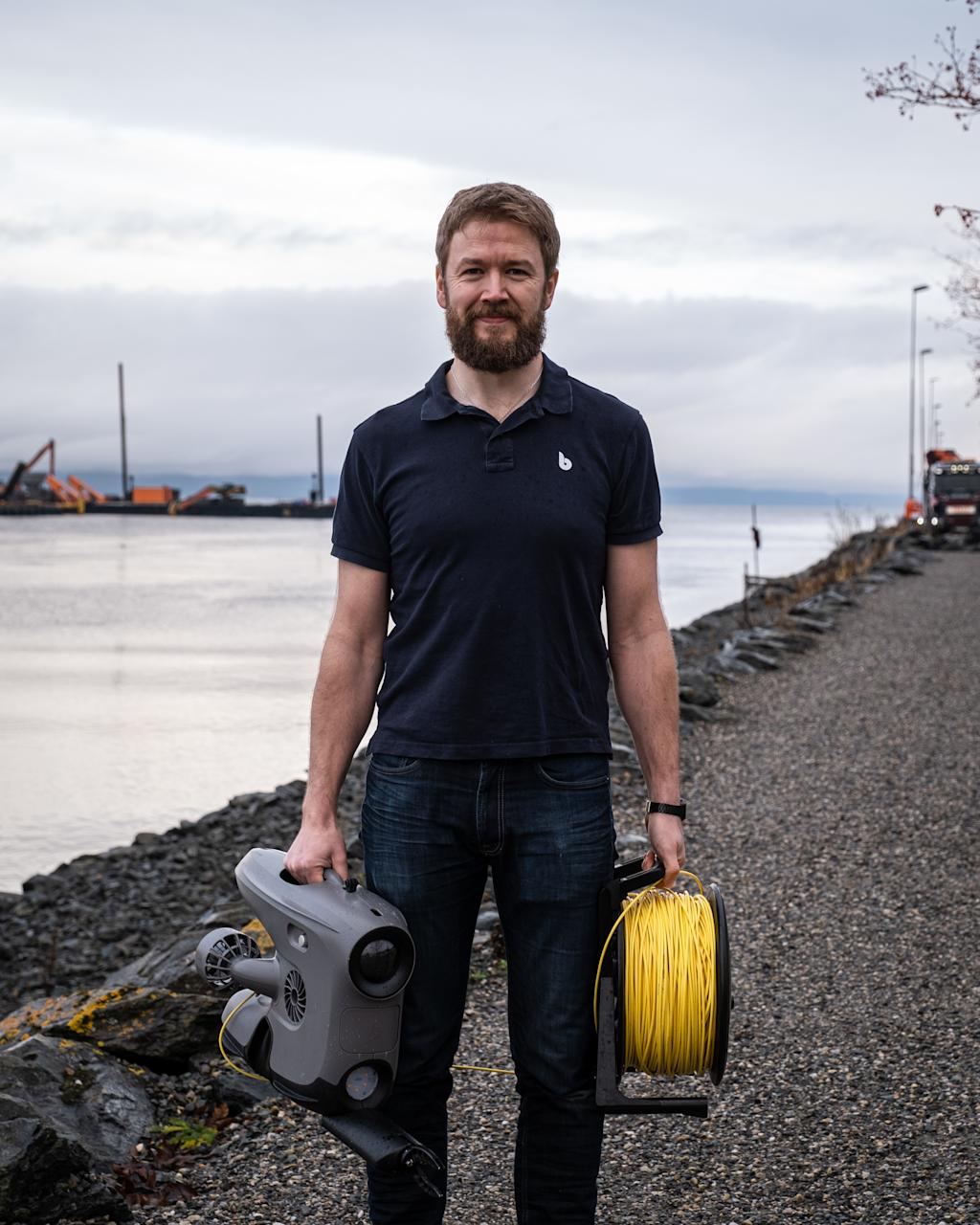Ship hull inspections are carried out in every kind of water condition and on all types of ships. The goal of these inspections is to obtain data. This data can be as simple as checking to see if a vessel has been physically damaged during a suspected impact and can be as complex as testing the metal thickness of a hull to ensure stability & compliance with regulatory bodies. Let's take a look at a few use-cases where inspection class ROVs can provide value and demonstrate how Blueye can help to get these jobs done quickly, safely, and efficiently.
Biofouling and Invasive species
By now, the science is well established, and we can conclude that biofouling of ship hulls leads to decreased hydrodynamics, increased fuel consumption, slower steaming, and a host of other issues. It is estimated that the elimination of significant biofouling from hulls could lead to a 30 Billion USD reduction in bunker purchases each year. However, a clean hull leads to more benefits than just a lower fuel bill. By establishing good ship health inspection regimes, vessel owners & managers can prolong the life of their asset, reduce their carbon footprint, and positively impact not only their operations, but also help maintain healthy ecosystems.
International commerce, more specifically, global transportation, leaves in its wake the introduction and spread of invasive species and parasites via ballast water and hull fouling. The management of these harmful organisms may be aided by identifying a vessel's trade route allowing for targeted hull inspections of ships that travel environmentally sensitive area, identifying & cleaning a fouled hull -through proper inspection & treatment of ballast tanks.

US Executive Order 13112 defines an invasive species as "an alien species whose introduction does or is likely to cause economic or environmental harm or harm to human health". As we continue to develop an interconnected world economy, the movement of people & goods becomes an ever-increasing area of concern for the groups tasked with controlling the spread of potentially harmful biological agents. As previously noted, invasives are transported in two primary ways – on the hull and in the ballast tanks.Blueye can aid in collecting information from both areas. Identifying the biofouling on a ship hull can be tackled with a Blueye X3, but we can also be of use in a ballast tank. The size of Blueye X3 ROV is very conducive to being deployed in small spaces & tight quarters.
Recently, our Senior Technical Sales Engineer, Trond Larsen, was in Saudi Arabia onboarding Saudi Aramco on the use of Blueye X3 as a means of the comprehensive inspection of flooded tanks.

Class society requirement
Many visual & NDT inspection activities are planned to coincide with the Class Society's requirements. These inspections can occur when a vessel is in dry-dock but are more and more frequently carried out as UWILD (UnderWater Inspection In-Lieu of Drydocking) operations. These standardized inspections are commonly performed by commercial divers but are increasingly undertaken by qualified inspectors using ROVs.
In addition to the regular inspections a vessel must undergo, there are ad-hock needs that Blueye ROVs can handle. These tasks are where an ROV that weighs less than 10kg can be extremely effective. The ability to quickly deploy a Blueye in cases of suspected grounding, propeller fouling, and post-incident reporting are invaluable capabilities that every commercial vessel should be able to deploy.
Our customers at Oceaneering International have adopted Blueye X3 as a tool for offshore & UWILD operations. With the payload of Cygnus UTM and DigiTools CP, their team is making inspection operations faster, safer, and more cost-efficient.

Don't get jealous big boy (Millennium), you are still my favourite...Blueye ROV a very nice little ROV for UWILD operations with Oceaneering.
- Mazen Ashoush, ROV Supervisor, Oceaneering.
Contraband
The continuous movement of oceangoing ships provides nefarious actors with a means of transporting illegal cargo or contraband. This illicit cargo can be stashed onboard, hidden in ballast tanks, concealed in sea chests, and even welded onto the side of the hull. Smugglers use many methods to deliver their goods to market, and it is incumbent upon authorities to tackle this problem and stem the flow of illegal cargo.
In May 2022, Australian authorities reported that they had found criminals attempting to smuggle drugs into the country by tying them to the hulls of cargo ships to avoid detection. They say that the daring smuggling route was revealed when a scuba diver's body was found floating in Newcastle harbor near where a recently arrived ship from Argentina was docked. Multiple packages of cocaine, worth tens of millions of dollars, were floating around the corpse. It is believed that the diver attempted to retrieve cargo from the freighter when he got into trouble.
This kind of underwater concealment is seen worldwide. The crew may not know that the drugs are in the hull. How can authorities address this scourge if the vessel crew is unaware of the concealed cargo.
- Tony Wheatley, Director of the Australian Border.

Using inspection class ROVs to explore below the waterline of a ship is a good place to start. A Blueye X3 outfitted with DVL and extra light and camera allows the relevant authorities to deploy & safely investigate any suspected malfeasance quickly. The ROV's quick deployment, ease of use, and ability to live-stream the footage allow even inexperienced operators to inspect a ship hull effectively.
Conclusion
Making ship hull inspections easier, safer, faster, and more cost effective allows asset owners and managers to make more frequent inspections. These activities lead to lower operating costs, lowered emissions, and increased operational capacity. When you decide the time is right, Blueye Robotics is here to help with the knowledge, products, and expertise you need to succeed.

